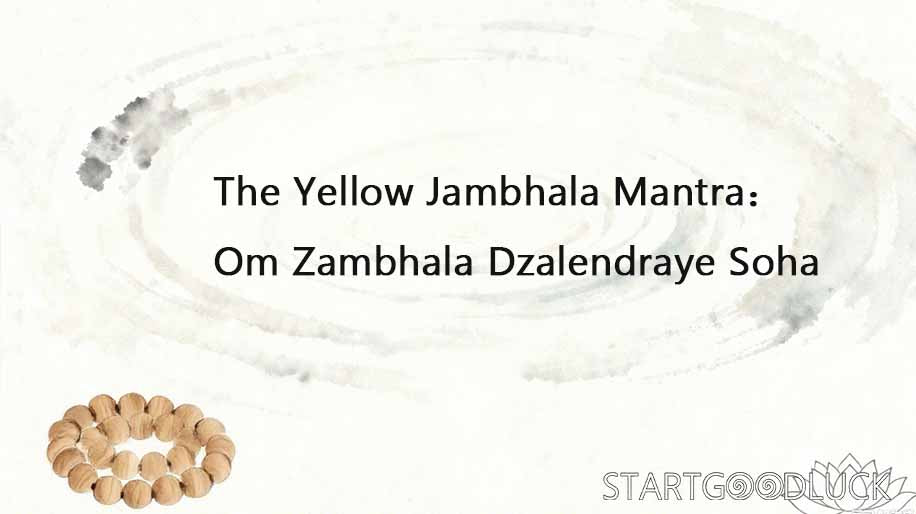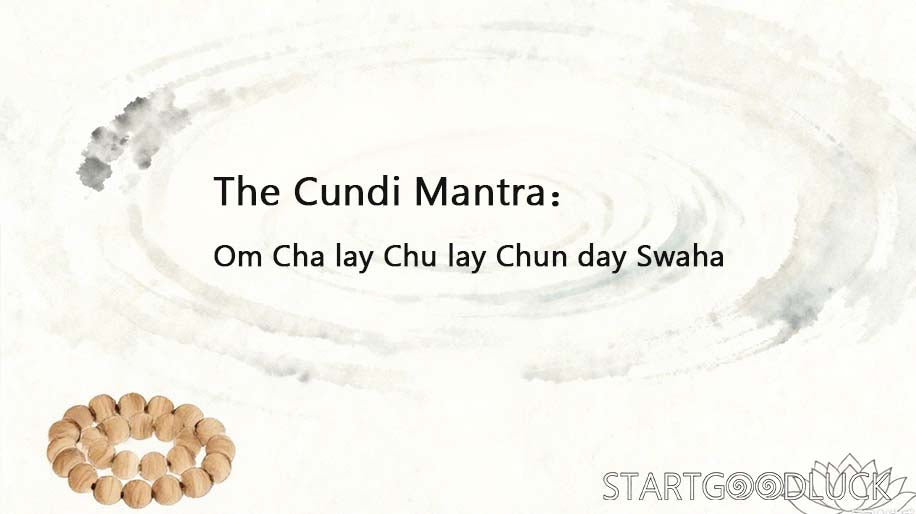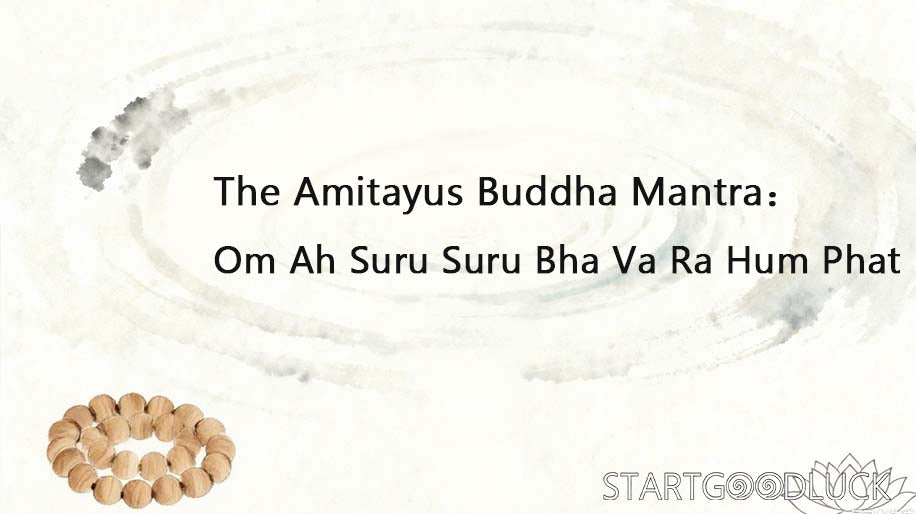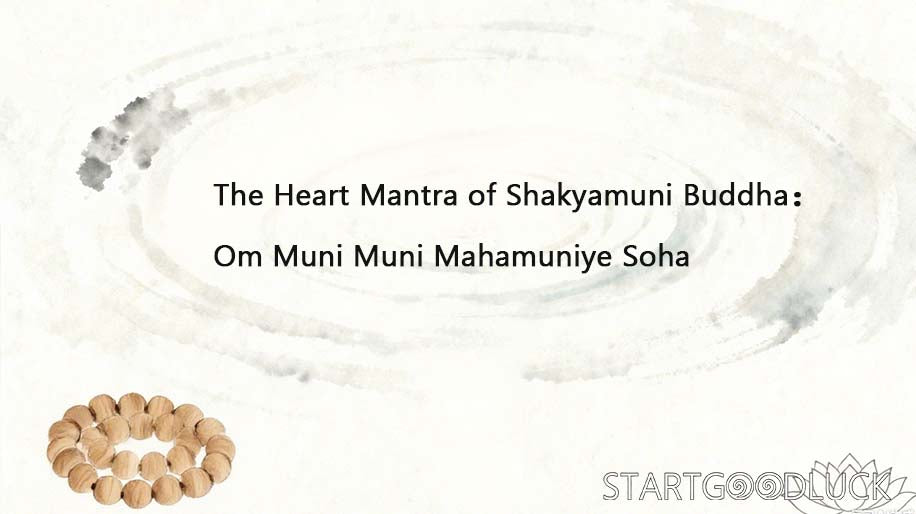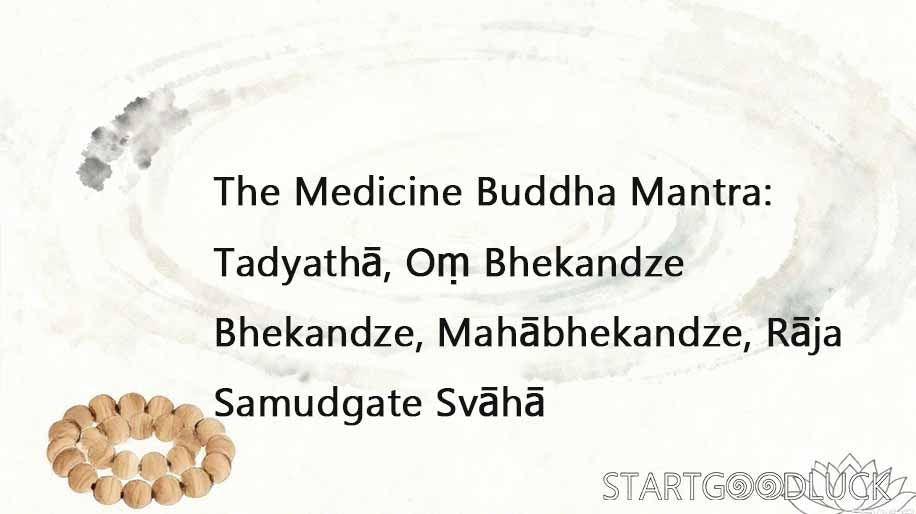The Yellow Jambhala Mantra is one of the most significant and widely practiced wealth mantras in Tibetan Buddhism. Its core chant is "Om Zambhala Dzalendraye Soha." This mantra is centered around the deity of Yellow Jambhala, carrying deep spiritual and cultural significance, and is a vital practice for devotees seeking prosperity and success in their lives.
Background and Image of Yellow Jambhala
Yellow Jambhala, known as Dzambhala in Sanskrit and Nor lha in Tibetan, is the foremost among the Five Jambhalas (White, Yellow, Red, Green, Black) in Tibetan Buddhism. He is also the leader of the deities in charge of wealth in the North. According to sacred texts, Yellow Jambhala was originally a great Bodhisattva who had achieved high levels of spiritual attainment. He vowed to help beings escape poverty and suffering by providing wealth and was thus empowered by the Buddha as a protector of wealth. His image is typically golden in color, symbolizing wealth and abundance. He wears a flower crown and a five-Buddha crown representing the five wisdoms. His right hand holds a wish-fulfilling jewel, and his left hand gently grasps a mongoose that spits jewels, symbolizing endless wealth. He is seated on a lotus and moon disc, radiating golden light.

The belief in Yellow Jambhala originates from ancient Indian Buddhism's emphasis on "wealth resources." Although Buddhism advocates contentment with less, it acknowledges the importance of material resources for spiritual practice and the well-being of sentient beings. Especially in difficult times, lack of basic life support can lead to distraction, making it hard to focus on spiritual practice. For lay followers, moderate wealth can help in performing good deeds and supporting the Three Jewels (Buddha, Dharma, Sangha). Thus, Yellow Jambhala is regarded as a "guardian and bestower of wealth," focusing not merely on material abundance but on attaining complete spiritual resources through pure mind and righteous practice.
Origin and Scriptural Basis of the Yellow Jambhala Mantra
The lineage of the Yellow Jambhala Mantra can be traced back to tantric Buddhist scriptures, such as the "Yellow Jambhala Dharani Sutra" and the "Treasure King Dharani." It is said that the Buddha recited this mantra on Vulture Peak for the benefit of all beings. It was later transmitted to Tibet by great masters like Padmasambhava and became an important practice across different Tibetan Buddhist schools (Nyingma, Gelug, Sakya, etc.).

Scriptures clearly state that reciting the Yellow Jambhala Mantra can bring direct blessings from the deity. The "Yellow Jambhala Root Mantra Ritual" mentions that "if someone sincerely recites this mantra, Yellow Jambhala will appear before them, protecting them from poverty and ensuring wealth and success." In Tibetan monasteries, monks often recite this mantra collectively during morning prayers or special ceremonies. Devotees also practice it at home or carry mantra-inscribed flags or pendants for blessings.
Core Functions of the Yellow Jambhala Mantra
The Yellow Jambhala Mantra is not about "getting rich quickly" in a worldly sense. Instead, it helps beings fulfill their material and spiritual needs through the power of the Bodhisattvas' vows and the mantra's blessings. Its effects include:
Growing material wealth
It’s not about getting something for nothing or striking it rich overnight. For folks struggling financially and in real need of stability, reciting the mantra—with a clear heart, steady effort, and good deeds—can bring gradual improvements. Think smoother work days, a solid chance to earn more, or a little extra cash. Yellow Jambhala acts more like a helper than someone dropping money in your lap.
Spiritual abundance and security
It eases the fear and worry of not having enough, helping you learn to be content: valuing what you’ve got instead of fixating on what’s missing. It also helps you see money as a tool for living, not the end goal—making life feel that much steadier.
Supporting spiritual growth
If you’re so swamped just making ends meet that you’ve got no energy for inner growth, time with family, or helping others, the mantra can lighten that load. Once money stress eases up a bit, you’ll have more peace of mind to balance daily life with what really matters.
Letting go of habits that keep you stuck
Old habits like being stingy or sneaking small advantages can trap you in a cycle of hardship. Trying to do better—like sharing a little more or making amends for past selfishness—while reciting can help break those patterns, clearing space for better things to come.
From a karmic perspective, poverty often relates to past misdeeds like greed or theft. Reciting the mantra with repentance (like chanting the "Eighty-eight Buddhas Repentance") and generosity (even small acts of kindness) can purify poverty karma and accumulate future merit.

A true Story About Yellow Jambhala Mantra
In the 1990s, in the Amdo region of Qinghai, there lived a nomadic herdsman named Tsering. Plagued by poverty, his few remaining yaks had all perished in a severe blizzard. To make matters worse, his wife was seriously ill, and he was buried under debt with no means to pay for her treatment. Crushed by despair, he trekked to a nearby monastery to seek help.
The abbot of the monastery, an elderly lama, told him, "Suffering stems from past karma, but the compassionate deities never abandon sentient beings." The lama then taught Tsering the Yellow Jambhala Mantra (Oṃ Jambhala Jaridandaye Svāhā), instructing him: "Recite it 108 times daily. However, you must do so with a compassionate heart, dedicating the merit to all beings, not just seeking wealth for yourself. Prosperity is a byproduct of virtuous deeds, not the ultimate goal."
Though somewhat skeptical, Tsering faithfully practiced the mantra every day after returning home. After several months, he gradually felt his mind becoming more at peace, and the constant anxiety that had plagued him began to lift. One day, while cleaning out an old cattle pen, he accidentally unearthed an ancient clay jar containing several silver coins and pieces of amber—items historically used as currency in the region. This discovery provided him with enough resources to clear his debts and cover his wife's medical expenses.
Even more remarkably, the following spring, an elderly man from a neighboring village who had lost his only son approached Tsering and asked him to inherit his pastureland. The old man explained that the night before, he had dreamed of Yellow Jambhala, who told him, "The man who recites the mantra will be a good steward of your land." From then on, Tsering continued to live a simple life but became known for his generosity to poorer neighbors and remained a devout supporter of the monastery.
Method of Recitation and Precautions
Reciting the Yellow Jambhala Mantra requires a foundation of "devotion, respect, and purity of mind," with the following steps:
Basic Ritual
- Environment: Choose a quiet and clean place (a home shrine is ideal), or simply visualize Yellow Jambhala if no image is available.
- Time: Dawn or dusk is best, as the environment is calm and the mind is focused. Recitation can be done at any time.
- Visualization: Form the mudra (hands in prayer or holding Jambhala's gesture), visualize Yellow Jambhala's golden form smiling at you, and his wish-fulfilling jewel emitting light to bless you.
- Chanting: Recite "Om Zambhala Dzalendraye Soha" with focus. Beginners should aim for at least 108 times a day, gradually increasing as time allows.
Supporting Methods
- Offerings: Before reciting, offer water, flowers, or butter lamps to Yellow Jambhala as a gesture of respect, or visualize offering with body, speech, and mind.
- Generosity: After reciting, use part of your income for charity, like supporting the poor or monasteries, to "plant seeds of merit" and accelerate positive outcomes.
- Dedication: Conclude with a dedication: "May the merit of this mantra practice help all beings escape poverty and attain wealth; may my resources support the Three Jewels and benefit others."
Precautions
- Avoid Greed: Do not recite the mantra for selfish desires like gambling or luxury. Impure motives (like harming others for gain) hinder receiving Jambhala's blessings.
- Perseverance: Wealth accumulation requires conditions to come together. The mantra's effects usually manifest after sustained practice (weeks, months, or longer). Patience is key.
- Combine with Right Dharma: The mantra should be practiced alongside Buddhist teachings (like chanting, reading scriptures, and keeping precepts). Relying solely on the mantra without virtuous acts makes it hard to truly fulfill one's merit.
Conclusion
The Yellow Jambhala Mantra embodies the compassionate aspirations of the Buddhas and the needs of beings, awakening the innate potential for merit through pure practice and the deity's blessings. As stated in the "Avatamsaka Sutra," "All beings possess the wisdom and virtues of the Tathagata, but due to delusions and attachments, they cannot realize them." Wealth is similar; with mindful recitation and virtuous deeds, one naturally receives Yellow Jambhala's compassionate protection, progressing towards complete liberation with abundant resources.
May all practitioners receive Yellow Jambhala's blessings, achieve wealth and fulfill their virtuous aspirations, and use their resources to benefit all beings and realize enlightenment together.
Tap to explore our sacred Yellow Jambhala Thangka & Wealth Bracelet sets. Hand-blessed for abundance energy.

